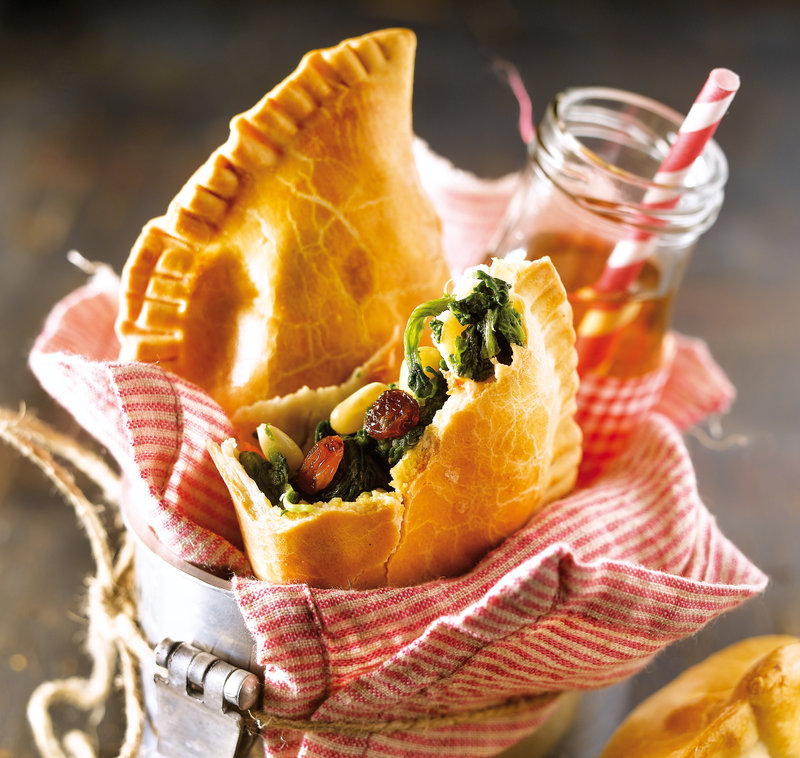Basket
Text: CUINA MAGAZINE Photo: Anna García Frigola
Baked full of goodness
Stuffed with spinach, raisins and pine nuts, panadó is traditionally eaten during Lent
A traditional product of the Lenten period in Catalonia’s western region of Lleida, panadó is made from a bread dough enriched with oil or lard, and occasionally sugar. The dough is rolled out flat and, once filled with ingredients, is folded on itself and closed in the shape of a crescent. The edges of panadó are usually pinched before baking in the oven.
The most traditional filling is a stuffing made of spinach, raisins and pine nuts. Yet, fillings vary greatly today, with other vegetables like pumpkin often used. While panadó is traditionally a savoury dish, it is not usual these days to find sweet versions, often made with fruits such as apple. Whether savoury or sweet, panadó can be eaten at any meal time, and while ideal straight from the oven, is also eaten cold.
There are studies that trace the origin of panadó to the Middle Ages, and associate the food’s beginnings with the cultivation of wheat. Its association with Lent and Holy Week is believed to be due to the fact that these are days in the Christian calendar when meat was forbidden and abstaining from large meals was common among believers.
Eating panadó also has some health benefits, largely due to the presence of its most traditional filling, spinach. This leafy green vegetable has long been known for its nutritional qualities and has a reputation for restoring energy and increasing vitality. No doubt this is where its association with the American cartoon character Popeye comes from. Spinach is rich in iron, as well as being an excellent source of vitamin K, vitamin A, vitamin C and folate.

